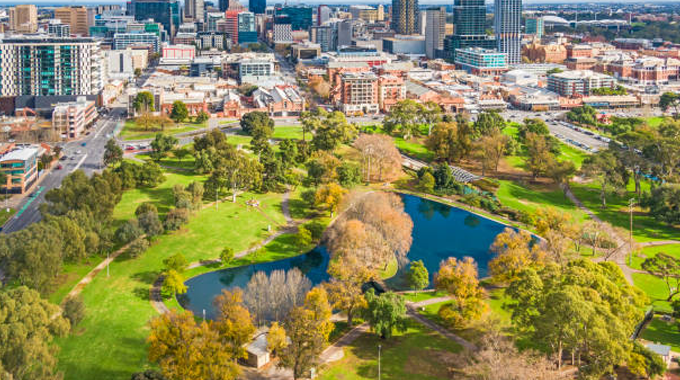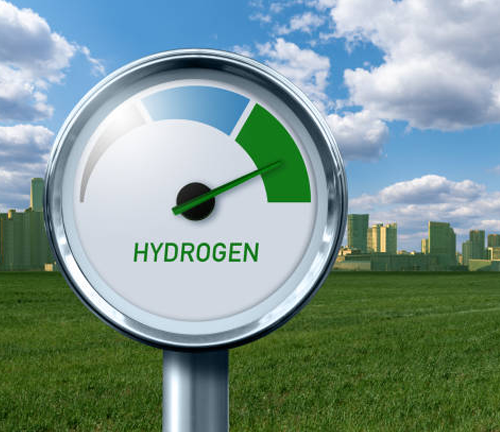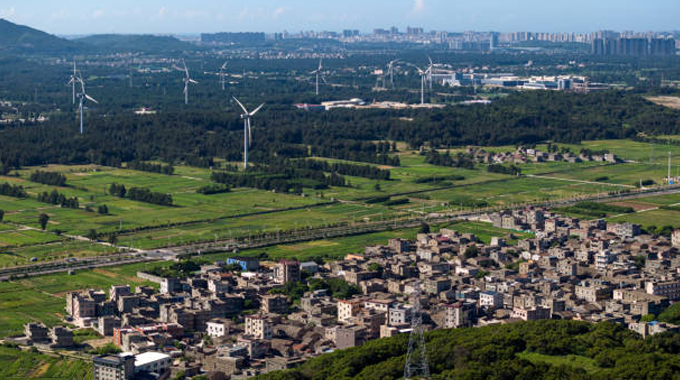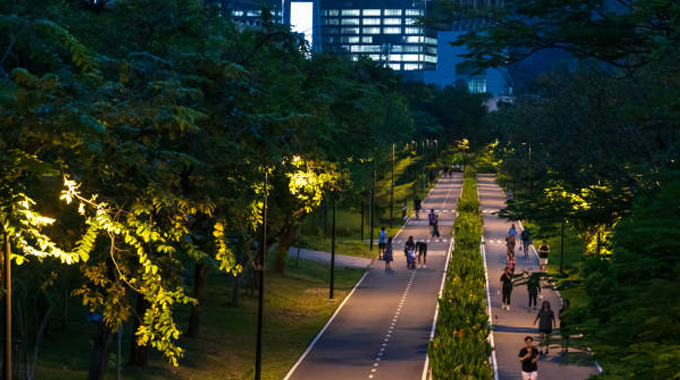Benefits of Green Spaces in Cities
- August 8, 2024
- 0 comment
Green spaces in cities are vital for enhancing the quality of urban life, offering a multitude of benefits for both the environment and the community. These areas, which include parks, gardens, and green rooftops, provide residents with a natural retreat from the concrete jungle, promoting physical and mental well-being. Access to green spaces encourages outdoor activities such as walking, jogging, and socializing, which can reduce stress and improve overall health.

Additionally, urban green spaces play a crucial role in improving air quality by filtering pollutants and producing oxygen. They also help mitigate the urban heat island effect, where city areas are significantly warmer than their rural surroundings, by providing shade and cooling through evapotranspiration. Furthermore, these green areas support biodiversity by providing habitats for various species of plants, birds, and insects, thus contributing to ecological balance. Socially, green spaces foster a sense of community by serving as gathering places where people can connect and engage in recreational activities. Economically, they can increase property values and attract tourists, boosting local businesses. Overall, the integration of green spaces within urban environments is essential for creating healthier, more sustainable, and vibrant cities.
List of Benefits of Green Spaces in Cities
- Environmental Benefits of Green Spaces in Cities
- Health Benefits
- Social Benefits
- Economic Benefits
- Challenges and Solutions
Environmental Benefits of Green Spaces in Cities
Air Quality Improvement
Green spaces play a crucial role in improving air quality in urban areas. Trees and plants act as natural air filters, absorbing pollutants such as carbon dioxide, sulfur dioxide, and nitrogen dioxide. This process not only removes harmful substances from the air but also releases oxygen, which is essential for human health. By reducing the concentration of pollutants, green spaces help decrease respiratory issues and other health problems associated with poor air quality. The more extensive and well-maintained the green areas, the greater their ability to purify the air, making cities healthier places to live.

Temperature Regulation
Urban areas are often significantly warmer than their rural surroundings due to the urban heat island effect, caused by the abundance of concrete, asphalt, and other heat-absorbing materials. Green spaces help mitigate this effect by providing shade and cooling through evapotranspiration—the process by which plants release water vapor into the air. Trees and vegetation cool the environment by shading buildings and sidewalks, reducing the need for air conditioning, and thus lowering energy consumption. This natural cooling effect not only makes urban areas more comfortable but also helps reduce greenhouse gas emissions, contributing to the fight against climate change.
Biodiversity Support
Green spaces are essential for supporting biodiversity within urban environments. They provide habitats for various species of plants, birds, insects, and other wildlife, creating pockets of natural ecosystems in the midst of the city. These areas serve as critical refuges for species that might otherwise struggle to survive in urban settings. By preserving and expanding green spaces, cities can maintain and enhance biodiversity, which is crucial for ecological balance. A diverse range of species contributes to ecosystem resilience, making urban environments more adaptable to changes and stresses, such as those caused by climate change.

Water Management
Green spaces play a significant role in urban water management. They help reduce runoff and flooding by absorbing rainwater and allowing it to infiltrate the soil. This natural absorption process minimizes the burden on urban drainage systems and reduces the risk of flooding during heavy rainfall. Additionally, green spaces act as natural filters, improving water quality by trapping pollutants and sediments before they reach water bodies. By facilitating groundwater recharge, these areas also contribute to the sustainability of local water resources. Effective water management through green spaces is essential for maintaining urban resilience to extreme weather events and ensuring the long-term availability of clean water.
Health Benefits

Physical Health
Access to green spaces encourages residents to engage in outdoor activities such as walking, jogging, and sports. These activities promote physical health by reducing the risk of obesity, cardiovascular diseases, and other health issues. Regular physical exercise in natural settings can improve fitness levels, boost the immune system, and enhance overall well-being.
Mental Health
Green spaces provide a tranquil escape from the hustle and bustle of urban life, offering residents a place to relax and unwind. Spending time in nature has been shown to reduce stress, anxiety, and depression. These areas serve as peaceful retreats where individuals can meditate, reflect, and connect with nature, promoting mental well-being and emotional resilience.
Social Benefits

Community Building
Green spaces act as social hubs where residents can gather, interact, and build relationships. They provide venues for social gatherings, events, and recreational activities, fostering a sense of community and belonging. By enhancing social cohesion and interaction, green spaces contribute to stronger, more connected neighborhoods.
Recreational Opportunities
Urban green spaces offer a wide range of recreational opportunities for people of all ages. They provide areas for play, leisure activities, and sports, promoting an active and healthy lifestyle. Additionally, green spaces serve as venues for cultural and community events, enriching the social and cultural fabric of cities.
Economic Benefits

Property Value Increase
The presence of well-maintained green spaces can enhance the appeal of real estate, leading to higher property values. Homes and businesses located near parks and gardens often experience increased demand, which can boost the local real estate market. This, in turn, benefits homeowners and contributes to the overall economic prosperity of the community.
Tourism Attraction
Green spaces can attract tourists to urban areas, providing economic benefits to local businesses. Well-designed parks, botanical gardens, and natural reserves can become popular tourist destinations, drawing visitors from near and far. This influx of tourists can stimulate the local economy, supporting restaurants, hotels, and retail establishments.
Job Creation
The development and maintenance of green spaces create employment opportunities in various sectors, including park management, landscaping, and urban planning. Green infrastructure projects can generate jobs, contributing to economic growth and community development. Additionally, the presence of green spaces can attract businesses and investors, further boosting the local economy.
Challenges and Solutions
Challenges
Despite the numerous benefits, creating and maintaining green spaces in cities can be challenging. Limited urban space and competing land uses often pose obstacles to the development of parks and gardens. Funding and maintenance issues can also hinder the long-term sustainability of green spaces.
Solutions
To address these challenges, innovative design and planning are essential. Cities can utilize vertical gardens, green roofs, and pocket parks to maximize green space in limited areas. Public-private partnerships and community involvement can also play a crucial role in securing funding and ensuring the maintenance of green spaces. By working together, urban planners, government agencies, and residents can overcome challenges and create vibrant, sustainable urban environments.
Frequently Asked Questions (FAQs)
- What are green spaces in cities?
Green spaces in cities refer to areas that are dedicated to vegetation, including parks, gardens, green roofs, urban forests, and community gardens. These areas provide natural environments within urban settings. - How do green spaces improve air quality?
Green spaces improve air quality by filtering pollutants through plants and trees, which absorb harmful substances like carbon dioxide, sulfur dioxide, and nitrogen dioxide. They also produce oxygen, contributing to cleaner and healthier air. - What is the urban heat island effect, and how do green spaces mitigate it?
The urban heat island effect is a phenomenon where urban areas become significantly warmer than their rural surroundings due to human activities and infrastructure. Green spaces mitigate this effect by providing shade and cooling the air through the process of evapotranspiration. - How do green spaces support biodiversity in cities?
Green spaces support biodiversity by providing habitats for various species of plants, birds, insects, and other wildlife. These areas help maintain ecological balance and promote the survival of different species within urban environments. - In what ways do green spaces help with water management in cities?
Green spaces help manage water by reducing runoff and flooding. They absorb rainwater, allowing it to infiltrate the soil, which naturally filters the water and reduces the burden on urban drainage systems. This process also helps replenish groundwater supplies. - What are the health benefits of having green spaces in urban areas?
Green spaces offer numerous health benefits, including encouraging physical activities like walking and jogging, which reduce obesity and related health issues. They also provide mental health benefits by reducing stress and anxiety and offering spaces for relaxation and meditation. - How do green spaces contribute to community building?
Green spaces act as social hubs where residents can gather, interact, and participate in recreational activities. They enhance social cohesion by providing venues for social gatherings, events, and communal activities, fostering a sense of community and belonging. - What economic benefits do green spaces provide?
Green spaces increase property values by enhancing the appeal of real estate. They attract tourists, boosting local businesses and the economy. Additionally, the development and maintenance of green spaces create job opportunities in various sectors, contributing to economic growth. - Can you provide examples of cities that have successfully integrated green spaces?
Cities like New York (Central Park) and Singapore are notable examples of successful green space integration. These cities have demonstrated significant improvements in air quality, temperature regulation, biodiversity, water management, and overall quality of life due to their green spaces. - What challenges do cities face in creating and maintaining green spaces?
Challenges include limited urban space, competing land uses, and funding and maintenance issues. These obstacles can hinder the development and sustainability of green spaces in urban environments. - How can cities overcome challenges related to green space development?
Innovative design and planning, such as vertical gardens and green roofs, can maximize green space in limited areas. Public-private partnerships and community involvement are crucial for securing funding and ensuring the maintenance of green spaces, helping to overcome these challenges.

Gilbert Griffin
Forestry AuthorGilbert Griffin is a forest management expert specializing in sustainable practices, forest health, conservation, and land management. With extensive knowledge in pest control, disease management, and habitat restoration, Gilbert develops strategies to preserve forest ecosystems and biodiversity. Passionate about the natural world, Gilbert adapts to changes in forest management and stays updated through continuous learning. Gilbert also provides seasonal advice to optimize forest care throughout the year.









Leave your comment